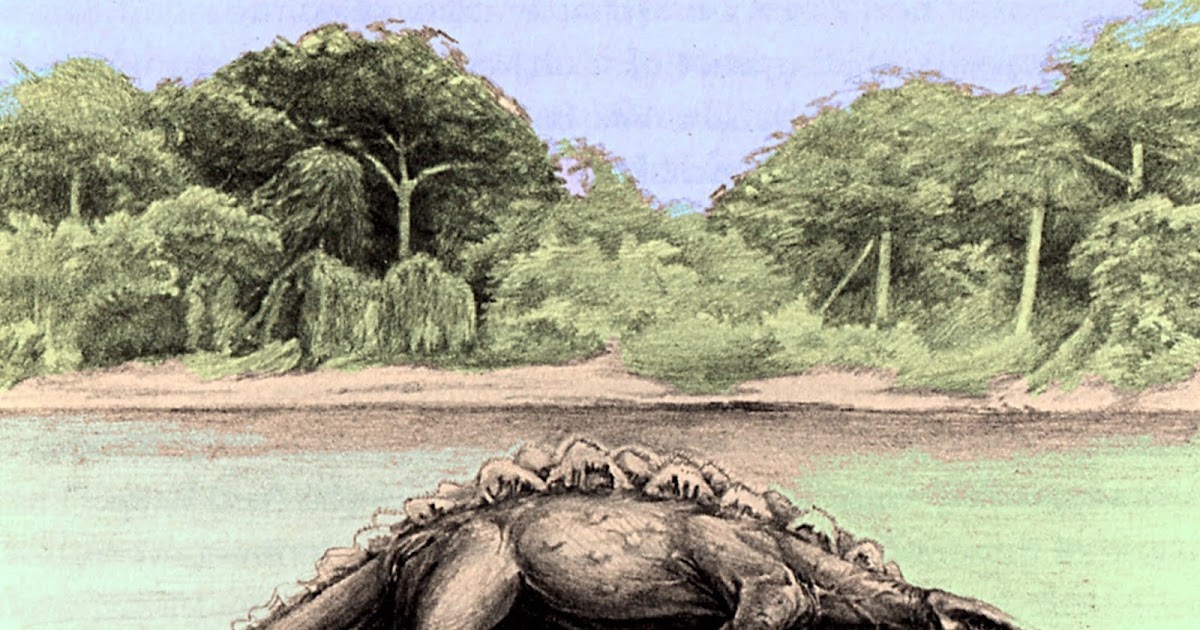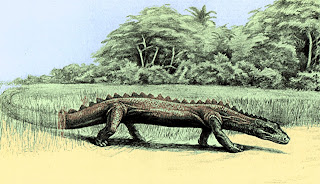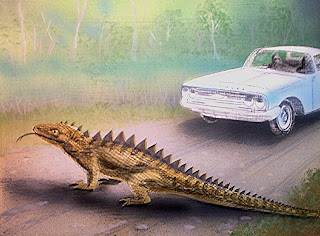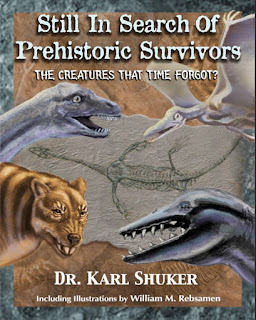In addition to the very famous sauropod-lookalike mokele-mbembe and the somewhat less famous nose-horned emela-ntouka (but click here for an extensive ShukerNature article concerning it), a third sizeable cryptid has also been reported from the Republic of the Congo’s vast, scarcely penetrable Likouala swamplands. Namely, the mbielu-mbielu-mbielu – so good, they named it thrice! During his two expeditions to this region during the early 1980s, veteran cryptozoologist Prof. Roy P. Mackal collected some interesting anecdotal evidence concerning this hitherto-obscure Congolese mystery beast, and also regarding a fourth, possibly related one, which he duly documented in his classic cryptozoology book A Living Dinosaur? (1987) and which are eminently deserving of being recalled here on ShukerNature.
According to one of the mbielu-mbielu-mbielu’s alleged eyewitnesses – a young woman called Odette Gesonget, from the village of Bounila – this triple-termed cryptid is a semi-aquatic beast “with planks growing out of its back”. In a bid to identify it, Mackal showed Gesonget several illustrated books depicting animals from the present and also from the distant past – and the picture that she unhesitatingly selected was of the prehistoric plate-bearing non-avian dinosaur Stegosaurus. Comparable descriptions were offered independently by native eyewitnesses s encountered elsewhere during Mackal’s Congolese travels too.
Yet although at least one stegosaur genus, Kentrosaurus, is indeed represented by fossil remains found in tropical Africa, there is no suggestion from fossil evidence that stegosaurs exhibited any amphibious inclination. But who can say whether, during the intervening 65 or more million years from the most recent known fossils to the present day, an evolved surviving stegosaur might have become secondarily aquatic?
It is possible that this beast, whatever its taxonomic identity may be, is related to (or is even one and the same as) yet another mystery animal from the Likouala swamplands – the nguma-monene, which has been reported from the Mataba tributary of the Ubangi River. According to native descriptions, it resembles a colossal snake (at least 130 ft long!), but bears a serrated dorsal ridge along most of its body’s length consisting of numerous triangular protrusions, possesses four short legs, and can walk upon land, with a low-slung body and forked tongue. Suggestions that have been offered for the nguma-monene’s taxonomic identity include a snake-like non-avian dinosaur, a very elongate varanid (monitor lizard), and even a primitive reptile descended from the ancestral forms that gave rise to lizards and snakes.
A remarkable modern-day sighting of the nguma-monene by a Westerner was recorded by fellow Congolese cryptid seeker William J. Gibbons in his own book Mokele-Mbembe: Mystery Beast of the Congo (2010), which also documents the various other Congolese and Cameroon cryptids sought by him during his expeditions. The eyewitness in question was Pastor Joseph Ellis, who informed Gibbons personally of his encounter.
It took place one clear sunny day in November 1971, when Ellis was journeying north in his 30-ft-long motorised canoe on the Motaba River. Suddenly he spied a huge, elongated, snake-like creature with a series of ridges like the edge of a saw running the length of its back. It was moving just across the river from the right bank, only around 100 ft away. Turning off his canoe’s engine, an astonished Ellis watched as the creature, which he could see was at least as long as his canoe, swam slowly across the river to its left bank, onto which it clambered, crawling through the thick grass and then disappearing into the jungle.
Ellis never saw its head, but just the section of its body that was visible to him was at least 30 ft long, and was greyish-brown in colour. Although he had personally seen many of this region’s large species of animal currently documented by science (including elephants, monitors, pythons, turtles, and crocodiles), he had never spied anything like this creature before, and, having no interest in cryptozoology, had not previously known of its existence here. What could it have been?
Mackal favoured a single, very large, and radically new species of monitor lizard as the most satisfactory explanation for both the nguma-moneme and the mbielu-mbielu-mbielu. Nonetheless, the latter’s stegosaurian parallels are evidently difficult to dismiss absolutely – because as he confessed in his book: “For me, mbielu-mbielu-mbielu remains an enigma”.
Nor are the two Congolese examples documented above the only dorsally-distinctive crypto-reptiles on record from Africa. One day in summer 1961, missionary Cal Bombay and his wife were driving through the Rift Valley on their way to Nairobi, Kenya, when they had to pull up sharply in order to avoid hitting an extremely large reptile apparently sunning itself in the middle of the road. The Bombays estimated that the creature, which was dark grey in colour, measured around 10 ft long, had a snake-like head, four stubby legs, and, most remarkable of all, bore a series of diamond-shaped serrations running down its entire mid-dorsal line, from the back of its head to the tip of its tail.
After about 20 minutes, thus giving its observers plenty of time to peruse it closely, this languorous mystery beast finally stood up, and sauntered lazily into the bush. When some Kenyan natives heard of their encounter, they referred to the creature as a muhuru, but nothing like it is known to Western zoologists.
This ShukerNature article is excerpted and adapted from my book Still In Search Of Prehistoric Survivors.





